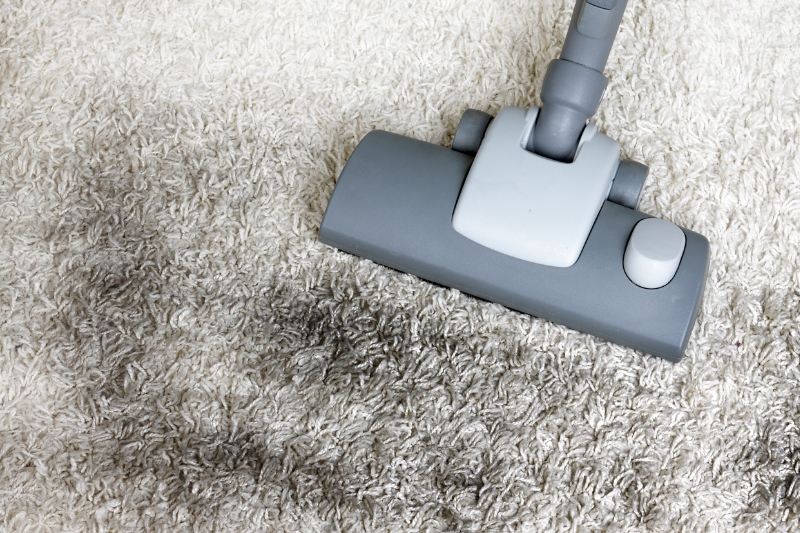Rugs are a great way to add comfort and style to every room in your home. However, they can also become a magnet for dirt, dust, and other debris if they’re not cleaned regularly.
This eventually leads to a build-up of allergens and other bacteria that can cause various health problems.
Unfortunately, it can be hard to know exactly how often to wash rugs. The optimal washing frequency varies greatly depending on several factors, including how much foot traffic it receives and whether or not you have young children.
In this article, we have laid out some guidelines to help you determine how frequently your rugs need to be washed.
We also provide some general information on why washing a rug is so beneficial and advise on the best cleaning method. Read on for everything you need to know!
How Often Should You Wash Rugs?
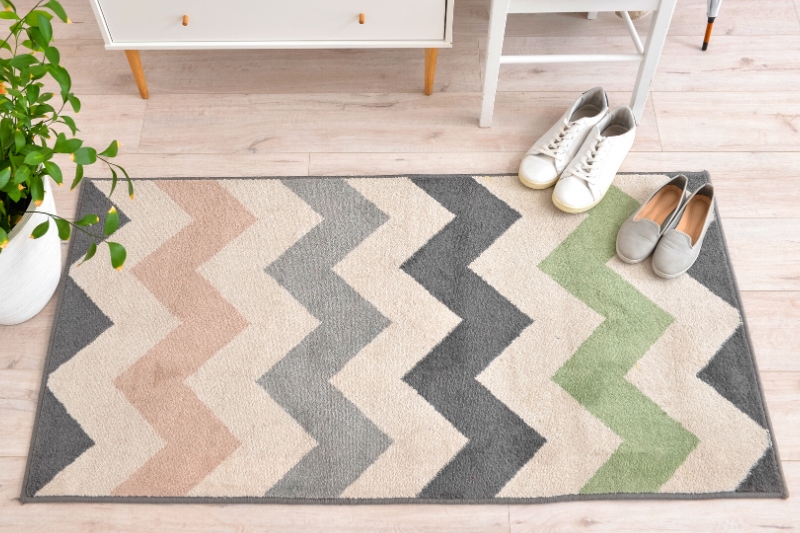
On average, most rugs will need to be deep cleaned once every 12 to 18 months to keep them in top condition.
In between these cleans, regular vacuuming will be enough to remove surface-level dirt and debris from the pile.
This being said, you may need to clean a rug more frequently if:
- It’s in a high-traffic area – e.g., an entryway or living room
- You have indoor pets or young children
- You wear shoes in the house
These factors make it more likely that your rug will attract dirt, so you may need to increase the number of cleans to two or three a year instead.
Young children are also likely to crawl on the carpet, meaning keeping your rug free from germs and bacteria is even more essential.
It’s also important to note that these timeframes should be loosely followed as a guide.
No matter how long it has been since the last clean, we highly recommend that you wash your rug if it starts to smell or appears noticeably dirty.
These are both clear signs that your rug needs to be cleaned and should not be ignored—even if your cleaning schedule says to wait a few more months.
Why Is it Important to Clean Rugs?
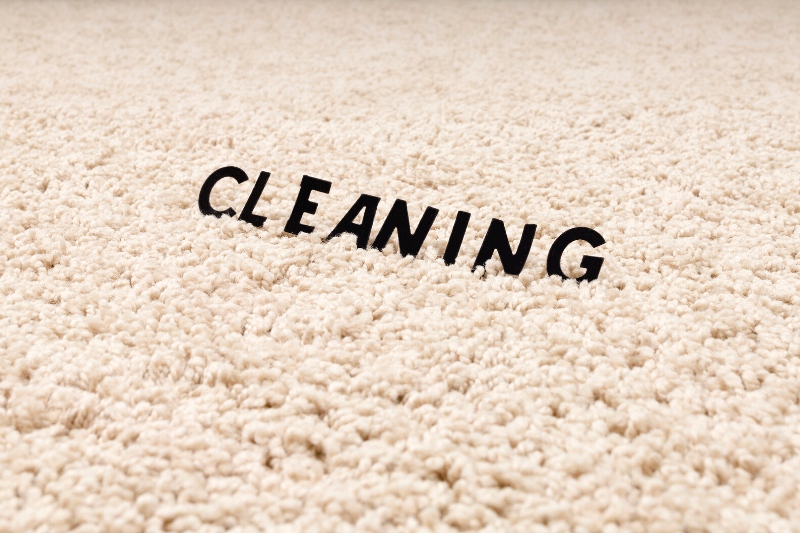
If you regularly vacuum your rug and don’t think it looks noticeably dirty, you may start to wonder whether it’s worth deep cleaning it every year.
While taking this chore off of your schedule may save you time, there are actually a variety of benefits to deep cleaning a rug, such as:
- Your rug will last you much longer
- Your home will smell fresher
- Your rug will look noticeably brighter
- It may be required to maintain your rug’s warranty
- Invisible allergens, microorganisms, and bacteria will be removed
This last point is particularly important, as these particles can become a severe health risk if not removed from your home. In fact, it has been shown that carpets and rugs often contain 4,000 times more germs than a toilet bowl.
Some common health issues you can look out for include respiratory problems (e.g., coughing, cold-like symptoms, and asthma attacks), skin infections, and allergic reactions.
What’s the Best Way to Wash a Rug?
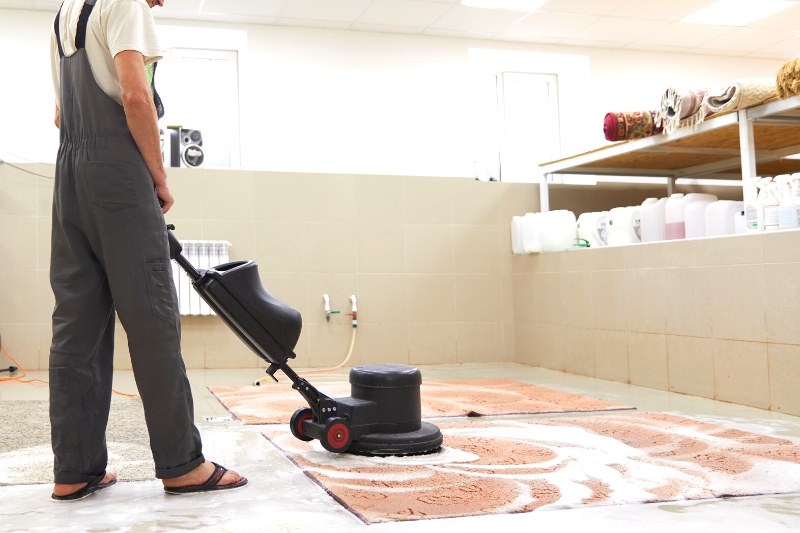
Hiring a professional is the best and easiest way to ensure a rug has been thoroughly cleaned. According to Checkatrade, the average cost of professional cleaning is £19 to £27 for a small rug and £33 to £56 for large ones.
Unfortunately, this will be out of some people’s price range, especially if you have multiple rugs that need to be cleaned more than once a year.
If this is the case for you, it is possible to wash a rug yourself by following the steps below.
However, the best method for washing a rug yourself will differ based on whether it is made of wool or synthetic material.
If you want detailed instructions for cleaning each type of rug material, read our complete rug cleaning guide.
Nevertheless, a basic set of rug-cleaning instructions can be found below:
- Remove any furniture or objects from the rug before taking it outside.
- Thoroughly vacuum both sides of the rug to remove as much loose debris as possible.
- Mix your cleaning solution with water. For a synthetic rug, you can use warm water and rug shampoo, but cold water and wool detergent are best for a wool one.
- Patch-test the cleaning solution by dabbing a small amount of soapy water onto the rug. If the colour doesn’t bleed, you can continue to step 5.
- Use a soft-bristled brush to work the soapy water into the rug pile.
- Leave the cleaner to work for 5 minutes.
- Use your garden hose or a few buckets of clean water to thoroughly rinse the soap out of the rug. Once the water starts running out clear, you can stop.
- Roll up the rug to squeeze out as much moisture as possible.
- Use a clean, white towel to blot any remaining water from the rug pile, and then lay it out flat to dry.
- Once completely dry, vacuum the rug once more to lift the fibres and make it look fluffy.
How Long Does It Take for a Rug to Dry?

Deep cleaning a rug isn’t an overly time-consuming task, but waiting for it to dry can take a while.
Although most rugs will be ready to use within 24 hours, larger ones could take up to three days to dry completely!
If you need to speed up this process, your best option is to leave a fan blowing directly at the rug on its highest possible setting. This will improve the airflow in the room and allow the water in the rug to evaporate more quickly.
Whatever you do, never put a damp rug back in its usual place. This can prevent the fabric from drying properly, resulting in the growth of mould and mildew. Your carpet could end up dirtier and less hygienic than it was to start with.
Why Is My Rug Still Dirty After Washing?
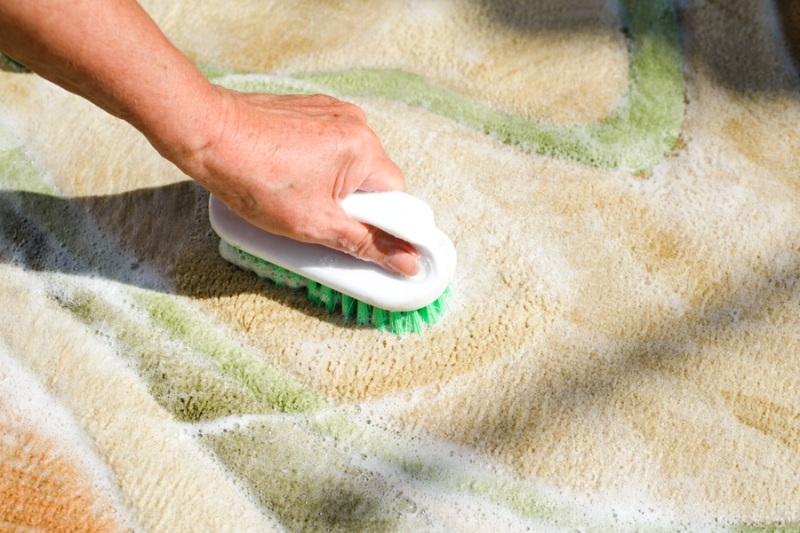
If you’ve spent time washing and drying your rug, seeing that it is still noticeably dirty can be extremely disheartening.
Unfortunately, there are a variety of reasons why this could happen, but some of the main culprits are:
Your rug is old
As a rug ages, the fibres will naturally begin to fade and wear away. This happens more quickly if your carpet is in a high-footfall area.
Unfortunately, this can make the pile appear dirty even if all the accumulated dirt and bacteria have been removed. Your best option here is to replace the rug with a new one.
You used the wrong cleaning products
A sticky residue can be left behind if you use the wrong detergent when cleaning your rug. This sticky residue will quickly attract more dust, dirt, and mildew, meaning your rug must be cleaned again.
Try switching your cleaning products and see if the problem is rectified.
You didn’t rinse the rug properly
Thoroughly rinsing all of the detergent out of a rug is an essential part of the cleaning process. Failure to remove this detergent from the fabric will leave behind a sticky residue.
Once again, this will cause the material to attract debris much quicker than it usually would.
You’re dealing with tough stains
Particularly tough stains, such as oil-based products, will not come out of your rug with regular cleaning.
Instead, try treating them with a little stain remover or bicarbonate of soda to lift them from the fabric.
If the stain still doesn’t budge, you may need to call a professional rug cleaner to resolve the issue.
For more tips and advice on cleaning your rugs, check out our carpet cleaning hacks here.

Hannah has a passion for cleaning. She worked her way around Australia by cleaning hostels in exchange for free accommodation and used her cleaning skills to bag a job as a chalet host for a luxury ski company in France.
